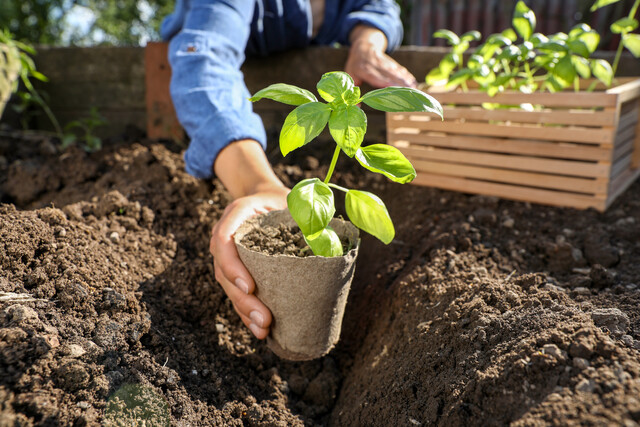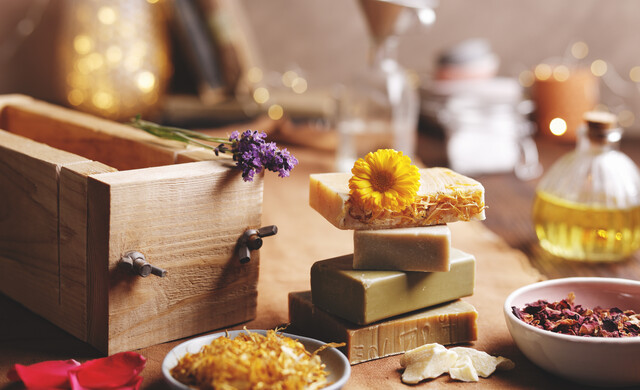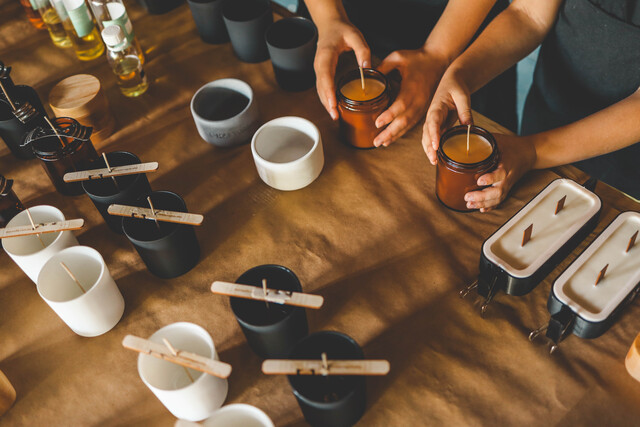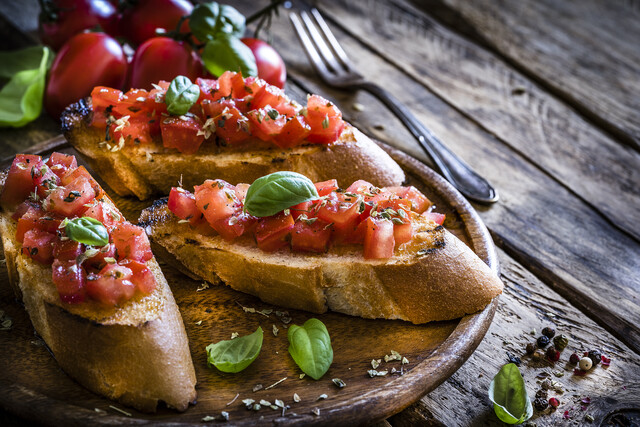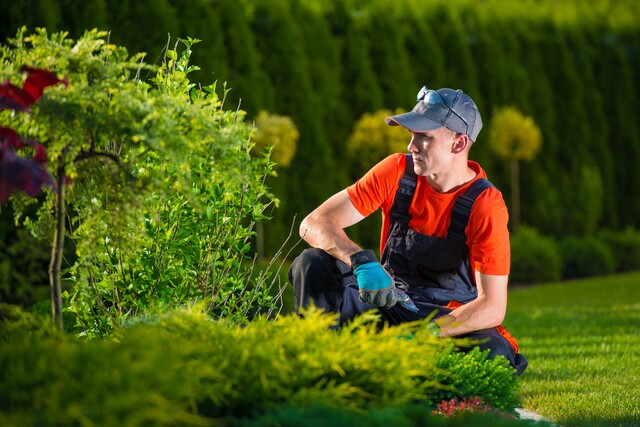Some Techniques for Flower Arranging
It's Time to Arrange!
Arranging flowers does take a little bit of artistic ability. But, more than that, it takes some knowledge of what goes into creating a basic floral design that is visually appealing and will last for as long as possible.
Arranging your flowers like a pro takes some practice, so please go get yourself some flowers and practice along with this lesson. You'll learn something while you enjoy the flowers you just got for yourself!
One of the best ways to decide how to arrange flowers is to find a design that you like and work to recreate it. It isn't possible to teach you absolutely everything there to flower arranging in this course, you will still master some of the easiest and classiest designs that will impress your friends and hopefully your new clients.
Keep it Simple
Use as many flowers as you need for an arrangement. No more. No less. Avoid adding all the flowers you have at your disposal. Also avoid not using enough flowers. Both mistakes are signs of an amateur.
Hybrid Tabletop Technique
This first technique is designed to provide a solution to a common problem with flowers that have straight, but flexible stems. Usually, when you place these flowers in a vase, they just lean over and refuse to stay in place.
As with all the following arranging techniques, I am assuming that you will start with flowers that are cleaned, watered, and fed. Never skip that part of the process!
Start with a good bunch of flowers. I am demonstrating this with the long-stemmed alstroemeria, but it can be done with many different flowers. Hyacinths make a good choice, as do both full-sized and mini calla lilies. In fact, using full-size white calla lilies is one of the most classic presentations of this design!
Because this technique highlights the entire flower, blossom and stem, you will want to use a clear vase so that the artistry of the stems is visible.
Step 1: Arrange your cleaned and fed flowers in front of you in this manner. Choose the tallest, straightest stem and place it in the center.
As you look at your flowers, you will notice that some of the blossoms tend toward the right.
Some of the blossoms tend toward the left.
Don't fight Mother Nature. Allow the flower to do what it wants to do. Place all those blossoms that are leaning toward the right on the right hand side. Those blossoms leaning toward the left will be placed on the left hand side.
You will place the flowers on top of one another, keeping the tall straight ones in the center, and working toward the creation of a type of pyramid in front of you.
When you like how the flowers are arranged, grab all the stems together with your non-dominant hand and hold them firmly together.
Step 2: Here you can see that the ends are quite uneven.
This will happen in nature.
All you need to do is to trim them.
Using your clippers or the copper (if you're lucky enough to have one) and cut the stems straight across the bottom.
Step 3: Measure against the vase you intend to use. You want the flowers to be just a couple of inches above the edge of the vase.
Step 4: Now, hold the stems at both the top of the stems, just underneath where the flowers are, and your other hand will be at the bottom of the stems.
With a twist, one hand twisting (gently!) in one direction, the other hand twisting in the other direction, you will cause the stems to form a spiral shape.
This should result in a perfectly aligned twist that is characteristic for this arranging technique.
It may take a couple tries, but you'll get the hang of it!
Here is what this arrangement looks like when it is completed.
Notice that the flower blossoms create a rounded canopy of blossoms, with the tallest ones in the center. Those blossoms that were determined to bend one direction or another are now perfectly aligned.
The stems are gently twisted in the vase giving you more to look at than simply the flowers. This has now become a work of art.
The simplicity of the clear vase and the water level completes this arrangement style.
Hybrid Matrix Technique
When you're looking to arrange thick, woody stems like roses, most people are inclined to simply just force them into a vase where they will stand upright, looking exactly as if you have just plopped them into a vase.
The hybrid matrix technique allows you to work with the flowers, their nature, and their imperfections to create a classic and breathtaking display that is so easy, you won't believe it.
Before you begin, again, make sure your flowers are cleaned, conditioned, and rested. Begin by placing one flower at a diagonal into the container.
You will be working in a clockwise manner, and you'll place each subsequent stem into the vase underneath the previous stem. This will help each flower to rest easily against the one preceding, with adequate room for the blossoms to look arranged, but relaxed.
As you continue, you will be creating a matrix or a structure underneath that will subsequently support each row as you build the arrangement.
When you begin to reach the end of the arrangement, it isn't necessary to continue with the pattern. Now you're looking to fill in any voids on the top, where the flower blossoms are.
I always place the tallest and straightest stems in the center as the last flowers to be put in place.
This is what the matrix looks like in a large bowl with stems about 24 inches long.
Let's take another look at exactly the same technique in a smaller vase with shorter stems.
Step 1 : Lay out your stems and cut them all to about the same length.
Here I am using a 6 inch square glass vase and I cut the stems to about 10 inches to start, clipping each one as I insert it into the vase.
By the way, you will need about 24 roses to complete this look! I know, such a small vase, and SO many flowers! Isn't that wonderful? You'll be so happy with the look that you will create this one again and again.
Step 2 : As we started with the previous example with the long-stemmed pink roses, begin by placing your first flower at a diagonal into a far corner.
Because you're working with a square vase, you will want to trim each stem as you insert it because those placed at a diagonal into a corner will need to be longer than the ones placed against a flat side.
Remember, work clockwise, and place each stem underneath the one you just positioned before it.
Step 3 : Once you have eight or nine roses in place, creating the outer row, you will begin to work in the opposite direction!
Place about eight or nine roses on top of the preceding matrix but work counterclockwise now. You will be able to observe the creation of the matrix through the glass, and you can now see how strong and stable this type of an arrangement really is.
Here are two photos of the completed arrangement.
The first one is completely unadorned, with only the roses as the adornment. Isn't that simply elegant?
The second photo shows that you can place a little bit of greenery underneath the bottom row of flowers, softening the edge, giving it a little softer, more romantic look.
Again, you begin by placing a single stem at a diagonal, and then you continue working clockwise until you have eight or nine stems in place.
As you can see, this creates a different look from the hybrid tabletop method, which is the gently twisting of the stems.
However, they both create beautiful interest in both the blossoms on the top and the stems that are visible through the vase.
Stabilizing and Wiring Flowers
When you are working with flowers, there will come a time when you absolutely must force a flower to bend to your will.
This can be accomplished by wiring flowers with floral wire, stem picks, and floral tape.
This is a basic skill that once learned will be used over and over again. In the picture above, we are wiring cymbidium orchids to be used in a wedding centerpiece.
Cymbidium orchids are an excellent choice for wiring because their stem is only about 2 or 3 inches long, and they last a long, long time out of water. That makes them a great favorite with brides and people who plan to wear a corsage to an event that will last several hours.
First, gather your materials. Here we have six inch pieces of 26 gauge wire, wire clippers, floral tape and an assortment of leaves and flowers.
Actually, this is the beginning of how to make a boutonniere. You'll learn how to do this in a later lesson, but it is important to understand that this is the initial step, the bones of the boutonniere or corsage.
Wiring a Flower
Step 1:
Pierce the bottom of the flower with a 6 inch piece of 26 gauge wire. Use the smallest gauge possible to be strong enough to do what you need, but flexible enough to not break the stem or the flower.
Bend the wire on either side of the flower so that it ends up on either side of the stem.
Step 3:
Twist the wire around the stem and itself, stabilizing the flower, and allowing you to bend it as you need.
Step 4:
Complete the look by finishing off with floral stem tape.
This tape is not sticky, but rather more waxy. As you stretch and pull while twisting, the floral tape will stick to itself, and stretch slightly as you wrap so that it will easily cover the wire and stem for a nice finished look.
This will take some practice, so get some floral tape, wire, and a few flowers and get to work. The first few times will be frustrating. Once you learn it, it is like riding a bike.
Wiring a Leaf
Step 1:
Choose a leaf that is the size you like and is relatively free of blemishes. If you're wiring a leaf, you are probably using it in a corsage or boutonniere. As such, it will be very visible. Make it as nice looking as you possibly can.
Step 2:
This is an even smaller gauge wire, about 30 gauge. This ivy leaf is fairly fragile, so I moved to a smaller, more flexible wire.
Pierce through the leaf, here I pierced behind the main vein, as this will help to hold the wire in the right place.
Step 3:
As you did with the flower, bend the wire on half and twist it on either side of the stem and onto itself.
Step 4:
Tape to cover the wire, just as you did with the flower. Because this ivy leaf is more fragile, it will be much more difficult to wire. Practice, practice, practice.
Start first with larger flowers and leaves, and practice until you get the hang of it. Once you can do it with a tender ivy leaf, you're getting pretty good.
We will use this leaf later when we put together the boutonniere. Practice now so that you're ready for that lesson.
Wiring a Floral Pick:
This is not very different. You will just take a pre-wired floral pick, wrap the wire around the stem of the ivy and the top of the pick, stabilizing the stem and giving you a firm handle at the bottom.
Again, finish it off with floral tape and you now have a sturdy piece of wired ivy ready to place into an arrangement.
Here is the piece of ivy being inserted into an arrangement. You can see how much easier it is to arrange with a longer, sturdier stem than the ivy originally had.




